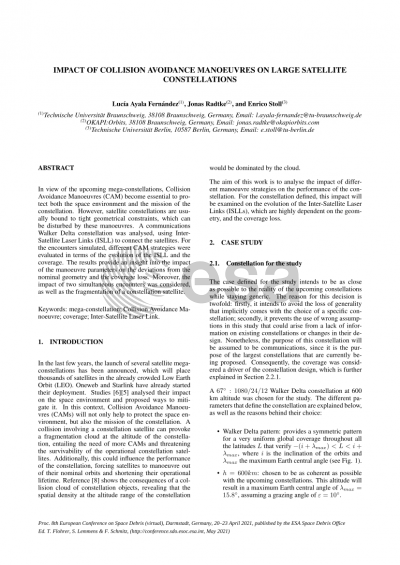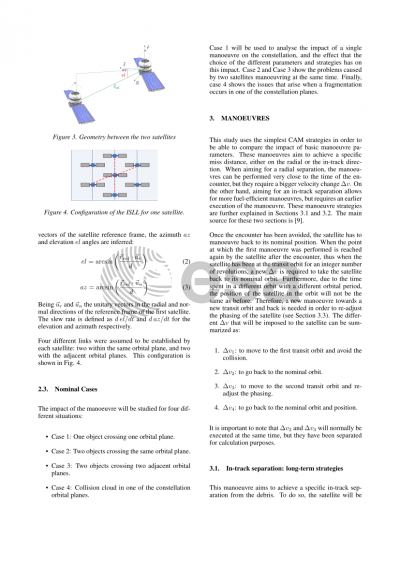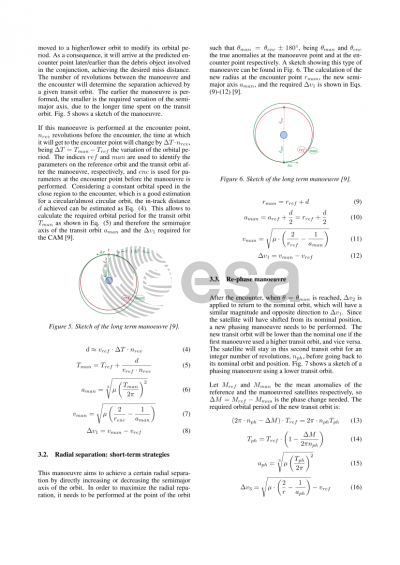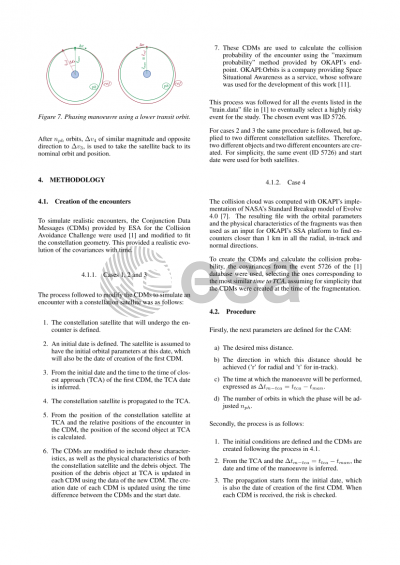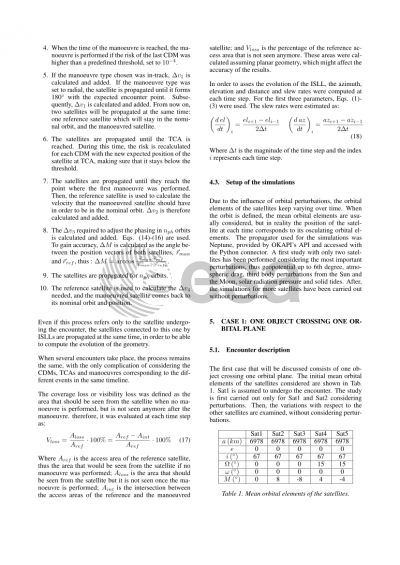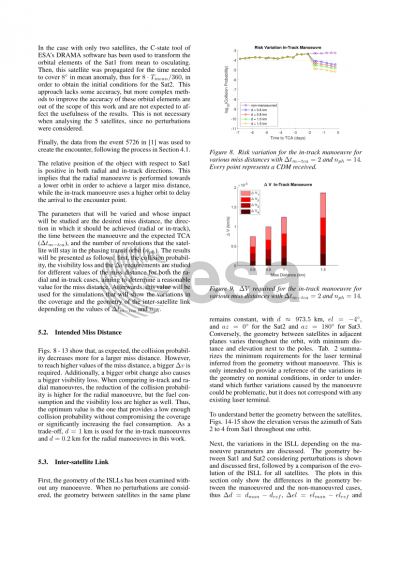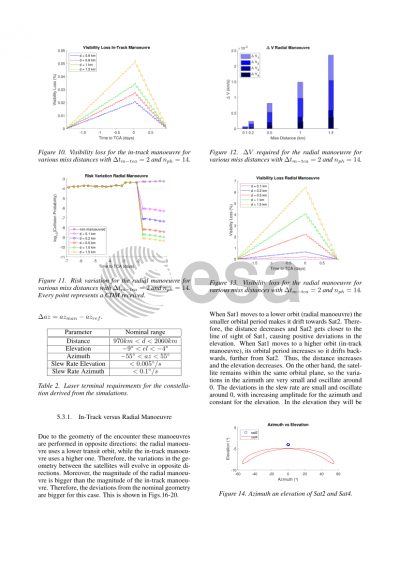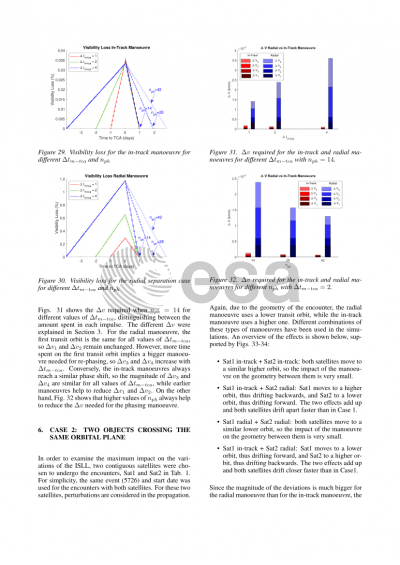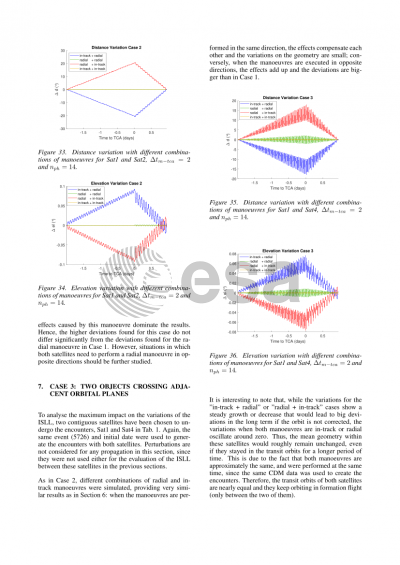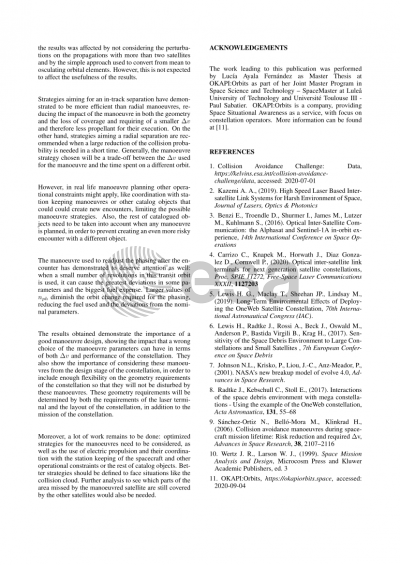Document details
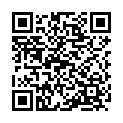
Abstract
In the last few years, the launch of several satellite mega-constellations has been announced, which will place thousands of satellites in the already crowded Low Earth Orbit. In this context, Collision Avoidance Manoeuvres (CAM) are essential to protect both the space environment and the mission of the constellation. However, satellite constellations are usually bound to very tight geometrical constraints, which can be disturbed by these manoeuvres. The aim of this work is to analyse the impact of these manoeuvres on the performance of the constellation, comparing the effect of different manoeuvre strategies.
A communications Walker Delta constellation with single redundancy has been defined for the study. Inter-Satellite Laser Links (ISLL) were used to connect the satellites. Subsequently, an encounter has been simulated to occur between a constellation satellite and a debris object. The Conjunction Data Messages (CDMs) provided by ESA for the Collision Avoidance Challenge were used to construct realistic encounters, after being adapted to the defined constellation satellites. Different strategies for the CAM have been simulated, including considerations such as different manoeuvre execution times. The impact of the manoeuvre on the constellation was evaluated by analysing the evolution of the ISLL and the coverage corresponding to the manoeuvred satellite, and the deviation of these parameters from the nominal case. A comparison of the impact resulting from the different manoeuvre strategies is presented in this paper, and the main trends are discussed. The results provide an insight into the effects of the manoeuvre parameters on the deviations from the nominal geometry, as well as on the coverage loss. The findings intend to help in the choice of a manoeuvre strategy that minimizes these deviations. Moreover, the effect of two simultaneous encounters was considered, as well as the fragmentation of a constellation satellite. A summary of the impact of these cases is provided, demonstrating the importance of considering the entire constellation when a manoeuvre is performed.
Preview
